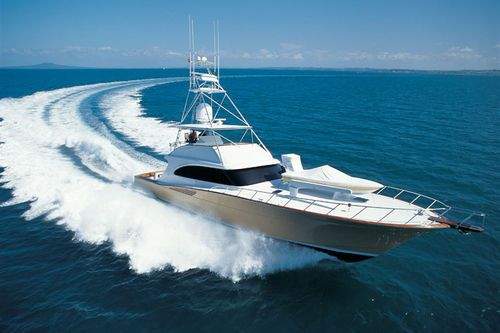1) What does a marine plate heat exchanger do?
The marine plate heat exchanger is the heart of the cooling system. It uses raw or ocean water to cool antifreeze, and in some cases ,to cool diesel fuel. As the raw water flows through the plates inside the heat exchanger, the water absorbs and exchanges the heat and will exit the heat exchanger through the exhaust overboard. Much like a car radiator, a marine plate heat exchanger that is leaking or clogged can result in overheating and costly engine repairs.
2) Why do heat exchangers need to be cleaned?
Over time, the heat exchanger plates become fouled with marine organisms and scale. This will gradually cause your engine(s) to run hotter. Have you ever noticed your gauges are slowly showing hotter temperatures? If a marine plate heat exchanger is not serviced, it can develop leaks and become hard to disassemble due to corrosion and salt. If the marine plate heat exchanger is not serviced regularly, corrosion will often cause extensive damage which will greatly increase repair costs. A properly maintained heat exchanger will assure a cool running engine and it will extend engine life.
3) Replacing the gaskets
The gaskets in a plate heat exchanger can become brittle, compressed, or distorted over time. Attempting to reuse the old gaskets is usually not a good idea, especially since we have made gaskets very affordable. When a heat exchanger is disassembled, the old gaskets should be removed and the plates thoroughly cleaned before attempting to re-gasket. Do not use anything rough or abrasive to clean the plates as damage to the plates may occur. Replacing the gaskets is a fairly easy process, as most gaskets just clip onto the plates. Some plates require a glue on style gasket which require a special glue and proper technique. We provide gluing instructions for our customers.
Plate heat exchangers are usually disassembled and cleaned every 2 to 3 years. If a heat exchanger is reassembled using old gaskets and develops a leak, the entire plate heat exchanger assembly has to be removed again, meticulously cleaned, and gasketed.
4) How do you clean a plate heat exchanger?
In some cases, power washing will sufficiently remove years of growth and buildup from the plates. We recommend soaking the heat exchanger plates in a chemical bath to remove scale and to make the heat exchanger perform the way it is intended. Do not use anything rough or abrasive to clean the plates, as damage to the plates may occur.
Once everything has been cleaned, the plates should be inspected, tested, and replaced as necessary.




